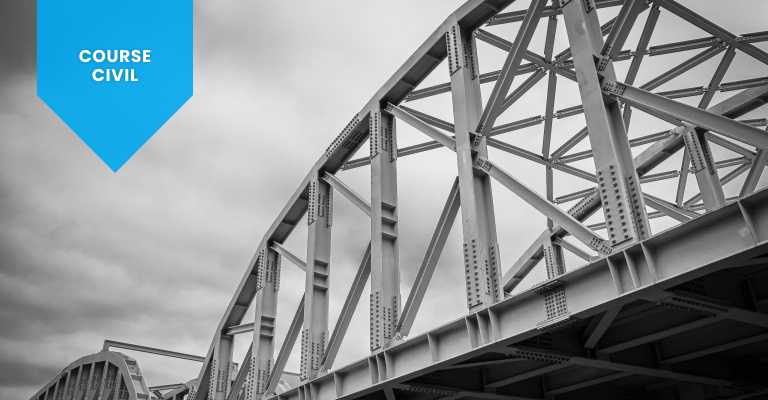-
1) Overview and Properties Setting
-
2) Modeling
-
3) Boundary Condition
-
4) Load Condition
-
5) Analysis Result

4. Single-Span Arch Bridge
Learn about modeling and analysis results of an arch bridge with vehicle moving loads applied within a single span
Course 1) Overview and Properties Setting
- Explore an overview and detail of an arch bridge
- Explore the loading conditions acting on an arch bridge
- Learn about tasks such as file storage and unit system configuration in the working environment
- Understand methods for modeling an arch bridge
- Acquire knowledge on setting materials and cross-sectional properties using the user-defined and DB for the analysis of an arch bidge
Course 2) Modeling
- Learn about the 1D frame modeling method for an arch bridge (including arch rib, hanger, main girder, cross beam and bracing)
Course 3) Boundary Condition
- Define the boundary conditions examined in the overview stage
- Explore the method of defining node boundary conditions using the Define Supports function
- Learn the method of defining boundary conditions for both ends of beams using the Beam End Release function
- Understand the method of creating a group of cross beams to be used in the subsequent load input steps
Course 4) Load Condition
- Explore the method of defining static load conditions using the Static Load Cases function
- Learn how to input static loads applied to the structure using the Element Beam Loads function
- Understand the method of setting up moving load codes for moving load analysis, defining lanes, and inputting vehicle moving loads
- Performing structural analysis for an arch bridge based on loading and boundary conditions
Course 5) Analysis Result
- Learn how to linearly combine the load cases generated after completing structural analysis
- Examine the deformed shape of the structure under load combination
- Verify member forces such as shear forces and bending moments
- Check the results of influence lines
- Use Moving Load Tracer to track and confirm significant load effects in influence line analysis under vehicle moving loads
- Understand the method of load substitution for moving loads to ststic loads using the MCT Command Shell function
